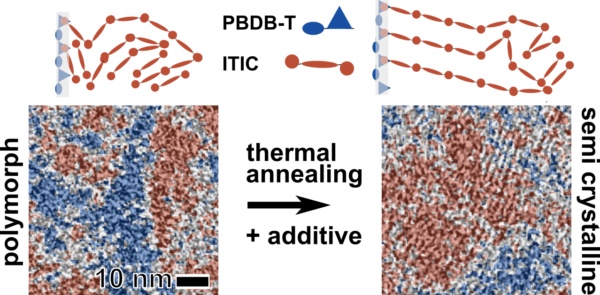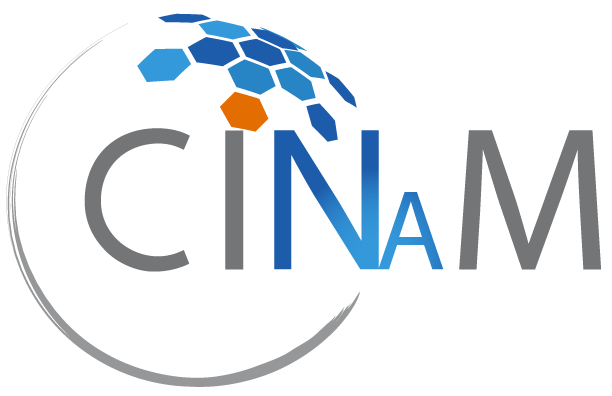Visualizing morphological principles for efficient photocurrent generation in organic non-fullerene acceptor blends
A new publication within the IMMF department (FUN team) in collaboration with IM2NP (Marseille), the Fraunhofer Institute (Freiburg, Germany) and Heidelberg University (Germany) visualize the molecular organization via analytical transmission electronic microscopy of two molecules (ITIC and PBDB-T) mixed in blend in active layers for solar conversion.
The efficiency of organic solar cells with donor polymers and non-fullerene acceptors depends on a complex morphology. Similar chemical and electronic structures impede generating in-depth insights in morphological details. We visualize molecular arrangements and the nanomorphology in PBDB-T:ITIC blends by correlating transmission electron micrographs and material distribution maps. Material phases are identified by machine learning on hyperspectral data from electron spectroscopic imaging. We observe a specific polymorph of ITIC after thermal annealing. During annealing, enhanced by the presence of additives, PBDB-T acts as nucleation site for ITIC due to strong p–p-interactions of the electron withdrawing groups of both molecules. This leads to efficient charge transport paths in ITIC phases with direct p–p-contact to PBDB-T at the interface. We conclude that p–p-stacking between donor and acceptor molecules facilitates charge carrier generation within mixed interface regions.

Link to the publication :
“Visualizing morphological principles for efficient photocurrent generation in organic non-fullerene acceptor blends”
https://pubs.rsc.org/en/content/articlelanding/2020/ee/c9ee03535d#!divAbstract
